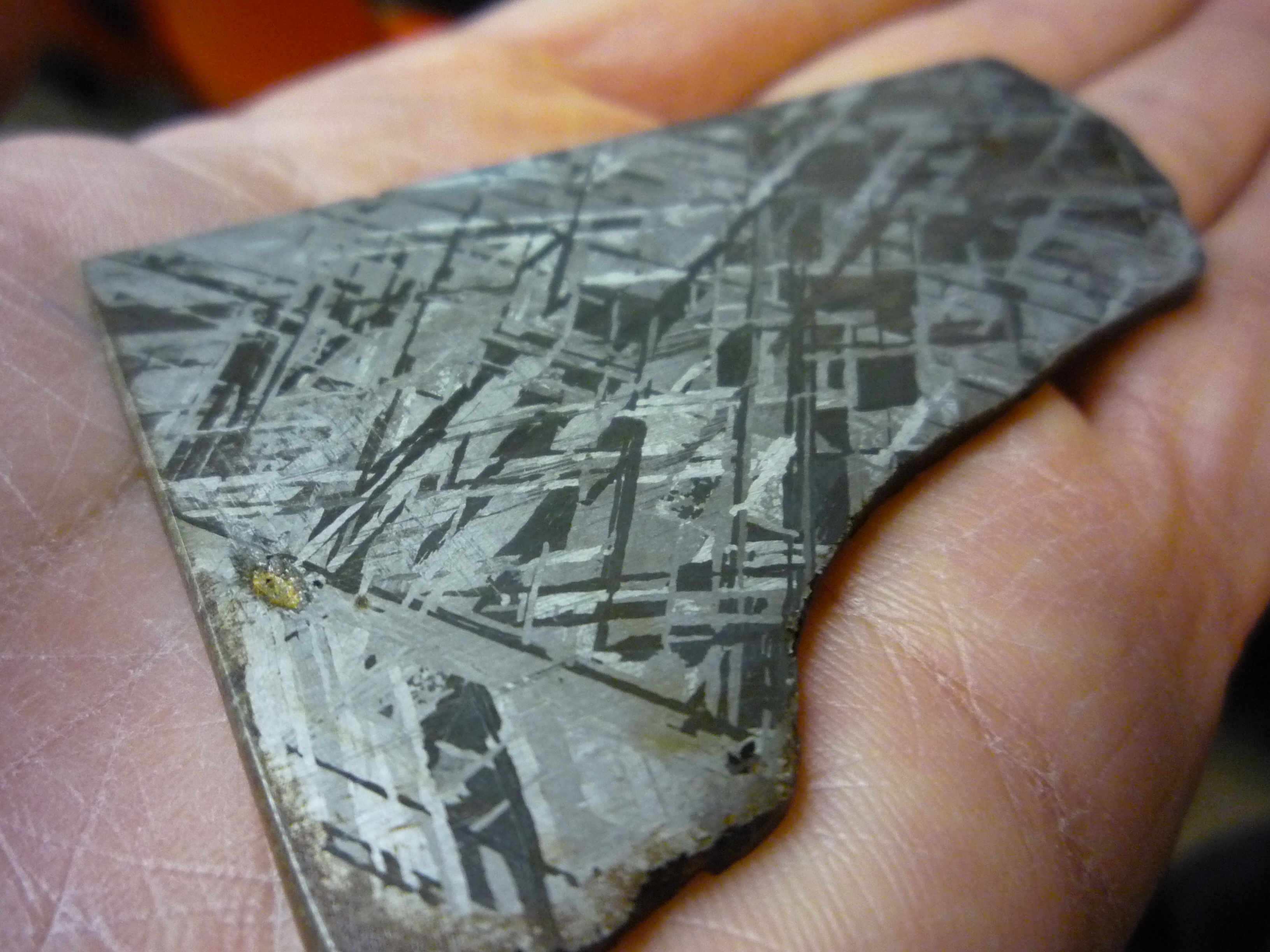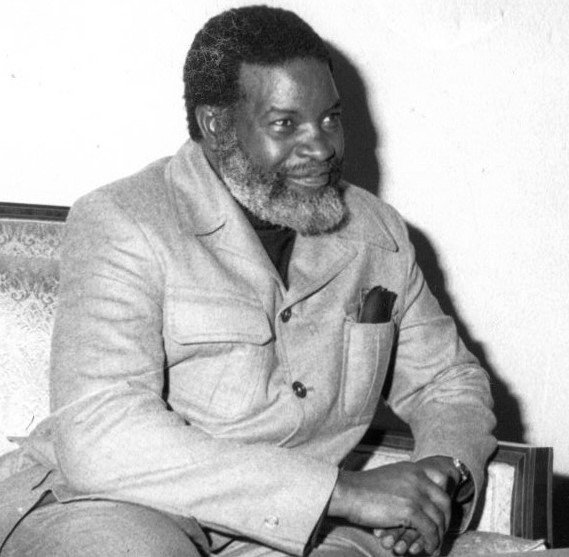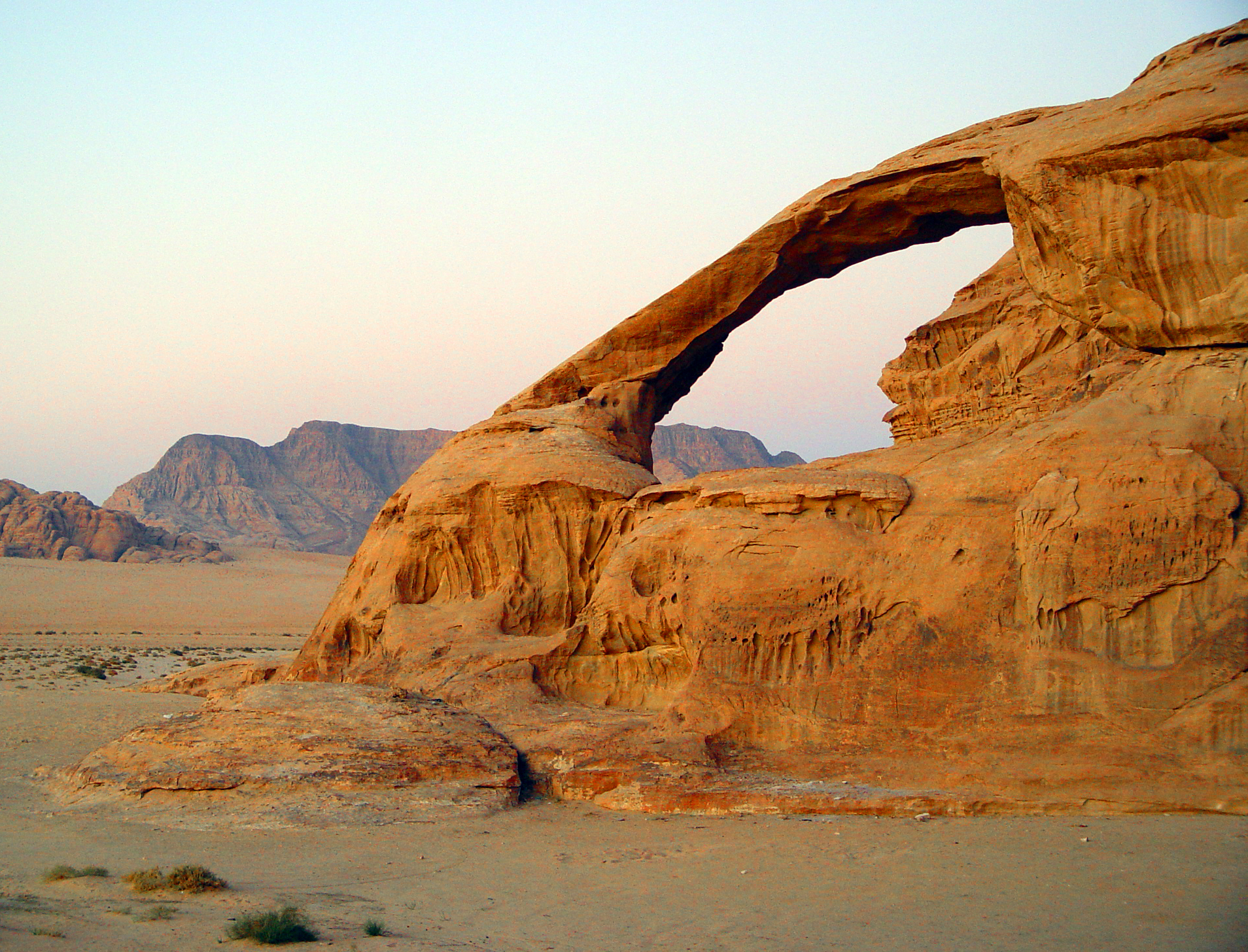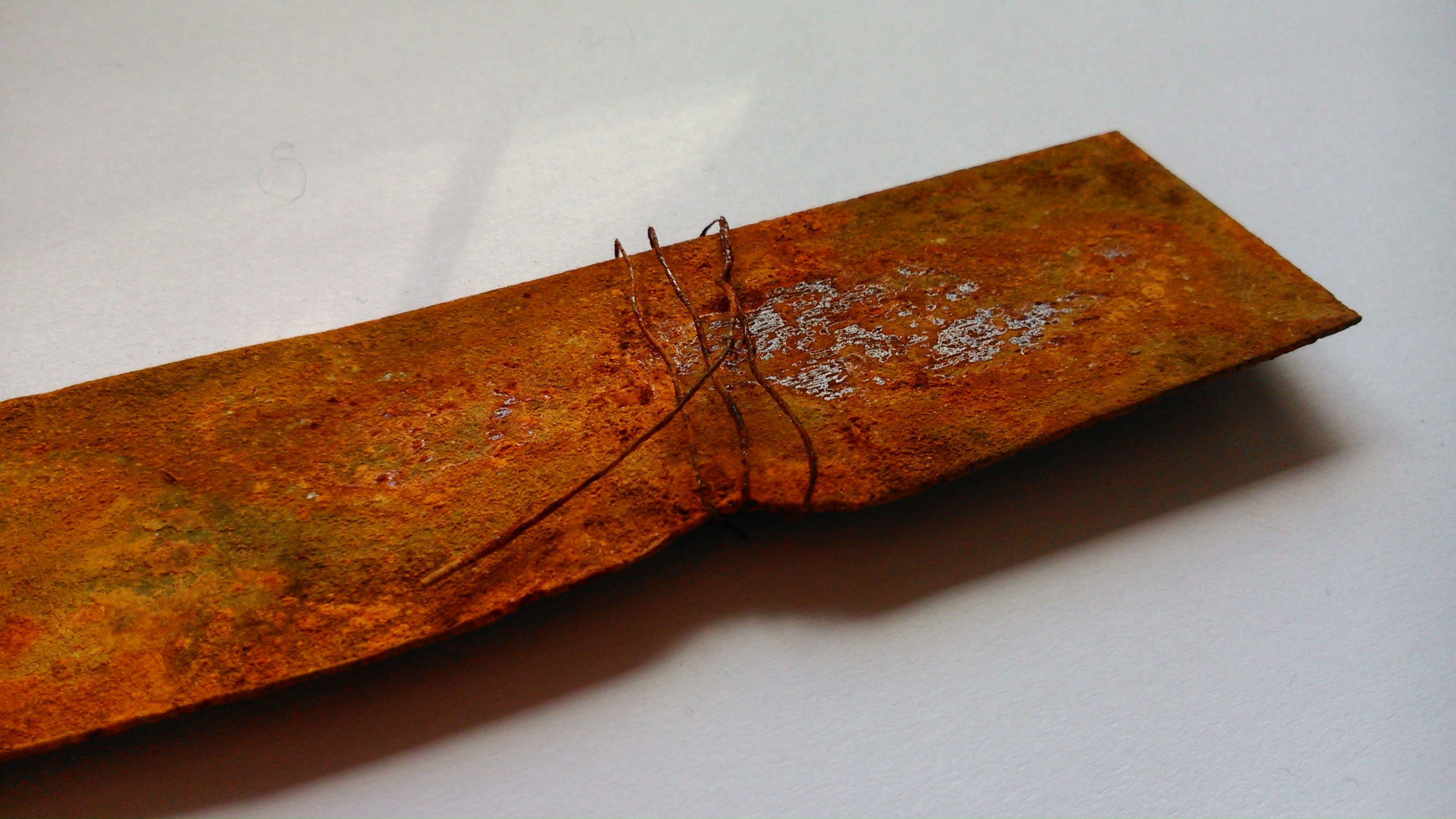|
Hoba Meteorite
The Hoba ( ) meteorite is named after the farm Hoba West, where it lies, not far from Grootfontein, in the Otjozondjupa Region of Namibia. It has been uncovered, but because of its large mass, has never been moved from where it fell. The main mass is estimated at more than 60 tonnes. It is the largest known intact meteorite (as a single piece) and about twice as massive as the largest fragment of either the Cape York meteorite's 31-tonne Ahnighito kept in the American Museum of Natural History or the Campo del Cielo's 31-tonne Gancedo (meteorite), Gancedo in Argentina. It is also the most massive naturally occurring piece of iron (specifically ferronickel) known on Earth's surface. The name ''Hoba'' comes from a Khoekhoe language, Khoekhoegowab word meaning 'gift'. Following its donation to the government in 1987, a visitor centre was constructed with a circular stone access and seating area. Impact The Hoba meteorite is thought to have impacted Earth less than 80,000 years ago. It ... [...More Info...] [...Related Items...] OR: [Wikipedia] [Google] [Baidu] [Amazon] |
Grootfontein
Grootfontein (, named after the nearby hot springs) is a city with 26,839 inhabitants in the Otjozondjupa Region of central Namibia. It is one of the three towns in the Otavi Triangle, situated on the B8 road (Namibia), B8 national road that leads from Otavi to the Caprivi Strip. Overview The place was known to the Herero people, Herero under the name ''Otjivanda''. In 1885, 40 Boer families from the north-west of South Africa settled at Grootfontein. Part of the Dorsland trekkers, they were heading towards Angola. When that territory fell under Portugal, Portuguese control, they turned back and established the Upingtonia, Republic of Upingtonia at Grootfontein. Abandoned by 1887, it became the headquarters of the South West Africa Company in 1893. In 1908 the Roman Catholic church established a Mission (station), mission in Grootfontein as the basis of their eventually successful attempt to establish missions in Kavango Region, Kavango. Like all the towns in the Otavi Triangl ... [...More Info...] [...Related Items...] OR: [Wikipedia] [Google] [Baidu] [Amazon] |
Nickel
Nickel is a chemical element; it has symbol Ni and atomic number 28. It is a silvery-white lustrous metal with a slight golden tinge. Nickel is a hard and ductile transition metal. Pure nickel is chemically reactive, but large pieces are slow to react with air under standard conditions because a passivation layer of nickel oxide forms on the surface that prevents further corrosion. Even so, pure native nickel is found in Earth's crust only in tiny amounts, usually in ultramafic rocks, and in the interiors of larger nickel–iron meteorites that were not exposed to oxygen when outside Earth's atmosphere. Meteoric nickel is found in combination with iron, a reflection of the origin of those elements as major end products of supernova nucleosynthesis. An iron–nickel mixture is thought to compose Earth's outer and inner cores. Use of nickel (as natural meteoric nickel–iron alloy) has been traced as far back as 3500 BCE. Nickel was first isolated and classifie ... [...More Info...] [...Related Items...] OR: [Wikipedia] [Google] [Baidu] [Amazon] |
Bonhams
Bonhams is a privately owned international auction house and one of the world's oldest and largest auctioneers of fine art and antiques. It was formed by the merger in November 2001 of Bonhams & Brooks and Phillips Son & Neale. This brought together two of the four surviving Georgian auction houses in London, Bonhams having been founded in 1793, and Phillips in 1796 by Harry Phillips, formerly a senior clerk to James Christie. Today, the amalgamated business handles art and antiques auctions. Bonhams operates two salerooms in London—the former Phillips saleroom at 101 New Bond Street, and the old Bonham's saleroom at the Montpelier Galleries in Montpelier Street, Knightsbridge—with a saleroom in Edinburgh Edinburgh is the capital city of Scotland and one of its 32 Council areas of Scotland, council areas. The city is located in southeast Scotland and is bounded to the north by the Firth of Forth and to the south by the Pentland Hills. Edinburgh .... Sales are al ... [...More Info...] [...Related Items...] OR: [Wikipedia] [Google] [Baidu] [Amazon] |
Republic Of Namibia
Namibia, officially the Republic of Namibia, is a country on the west coast of Southern Africa. Its borders include the Atlantic Ocean to the west, Angola and Zambia to the north, Botswana to the east and South Africa to the south; in the northeast, approximating a quadripoint, Zimbabwe lies less than 200 metres (660 feet) away along the Zambezi River near Kazungula, Zambia. Namibia's capital and largest city is Windhoek. Namibia is the driest country in sub-Saharan Africa, and has been inhabited since prehistoric times by the Khoi, San, Damara and Nama people. Around the 14th century, immigrating Bantu peoples arrived as part of the Bantu expansion. From 1600 the Ovambo formed kingdoms, such as Ondonga and Oukwanyama. In 1884, the German Empire established rule over most of the territory, forming a colony known as German South West Africa. Between 1904 and 1908, German troops waged a punitive campaign against the Herero and Nama which escalated into the first g ... [...More Info...] [...Related Items...] OR: [Wikipedia] [Google] [Baidu] [Amazon] |
Tripartite Accord (1988)
The Agreement among the People's Republic of Angola, the Republic of Cuba, and the Republic of South Africa (also known as the Tripartite Accord, Three Powers Accord or New York Accords) granted independence to Namibia (then known as South West Africa) from South Africa and ended the direct involvement of foreign troops in the Angolan Civil War. The accords were signed on 22 December 1988 at the United Nations Headquarters in New York City by the Foreign Ministers of People's Republic of Angola (Afonso Van-Dunem), Republic of Cuba (Isidoro Malmierca Peoli) and Republic of South Africa ( Roelof F. Botha). Negotiations In 1981 Chester Crocker, U.S. assistant secretary of state for African affairs for newly elected United States President Ronald Reagan, had developed a linkage policy. It tied apartheid South Africa's agreement to relinquish control of Namibia, in line with United Nations Security Council Resolution 435, and to retreat from Angola, to Cuba's withdrawing its tro ... [...More Info...] [...Related Items...] OR: [Wikipedia] [Google] [Baidu] [Amazon] |
South African Border War
The South African Border War, also known as the Namibian War of Independence, and sometimes denoted in South Africa as the Angolan Bush War, was a largely asymmetric conflict that occurred in Namibia (then South West Africa), Zambia, and Angola from 26 August 1966 to 21 March 1990. It was fought between the South African Defence Force (SADF) and the People's Liberation Army of Namibia (PLAN), an armed wing of the South West African People's Organisation (SWAPO). The South African Border War was closely intertwined with the Angolan Civil War. Following several years of unsuccessful petitioning through the United Nations and the International Court of Justice for Namibian independence from South Africa, SWAPO formed the PLAN in 1962 with material assistance from the Soviet Union, China, and sympathetic African states such as Tanzania, Ghana, and Algeria. Fighting broke out between PLAN and the South African security forces in August 1966. Between 1975 and 1988, the SADF staged m ... [...More Info...] [...Related Items...] OR: [Wikipedia] [Google] [Baidu] [Amazon] |
South West Africa
South West Africa was a territory under Union of South Africa, South African administration from 1915 to 1990. Renamed ''Namibia'' by the United Nations in 1968, Independence of Namibia, it became independent under this name on 21 March 1990. South West Africa bordered People's Republic of Angola, Angola (Portuguese Angola, a Portuguese colony before 1975), Botswana (Bechuanaland Protectorate, Bechuanaland before 1966), South Africa, and Zambia (Northern Rhodesia before 1964). During its administration, South Africa applied its own apartheid system in the territory of South West Africa. A German colonial empire, German colony known as German South West Africa from 1884 to 1915, it was made a League of Nations mandate of the Union of South Africa following German Empire, Germany's defeat in the World War I, First World War. Although the mandate was repealed by the United Nations on 27 October 1966, South African control over the territory continued. The territory was administ ... [...More Info...] [...Related Items...] OR: [Wikipedia] [Google] [Baidu] [Amazon] |
Oxidation
Redox ( , , reduction–oxidation or oxidation–reduction) is a type of chemical reaction in which the oxidation states of the reactants change. Oxidation is the loss of electrons or an increase in the oxidation state, while reduction is the gain of electrons or a decrease in the oxidation state. The oxidation and reduction processes occur simultaneously in the chemical reaction. There are two classes of redox reactions: * Electron-transfer – Only one (usually) electron flows from the atom, ion, or molecule being oxidized to the atom, ion, or molecule that is reduced. This type of redox reaction is often discussed in terms of redox couples and electrode potentials. * Atom transfer – An atom transfers from one substrate to another. For example, in the rusting of iron, the oxidation state of iron atoms increases as the iron converts to an oxide, and simultaneously, the oxidation state of oxygen decreases as it accepts electrons released by the iron. Although oxidati ... [...More Info...] [...Related Items...] OR: [Wikipedia] [Google] [Baidu] [Amazon] |
Weathering
Weathering is the deterioration of rocks, soils and minerals (as well as wood and artificial materials) through contact with water, atmospheric gases, sunlight, and biological organisms. It occurs '' in situ'' (on-site, with little or no movement), and so is distinct from erosion, which involves the transport of rocks and minerals by agents such as water, ice, snow, wind, waves and gravity. Weathering processes are either physical or chemical. The former involves the breakdown of rocks and soils through such mechanical effects as heat, water, ice and wind. The latter covers reactions to water, atmospheric gases and biologically produced chemicals with rocks and soils. Water is the principal agent behind both kinds, though atmospheric oxygen and carbon dioxide and the activities of biological organisms are also important. Biological chemical weathering is also called biological weathering. The materials left after the rock breaks down combine with organic material to create so ... [...More Info...] [...Related Items...] OR: [Wikipedia] [Google] [Baidu] [Amazon] |
Iron Hydroxide
An iron oxide is a chemical compound composed of iron and oxygen. Several iron oxides are recognized. Often they are non-stoichiometric. Ferric oxyhydroxides are a related class of compounds, perhaps the best known of which is rust. Iron oxides and oxyhydroxides are widespread in nature and play an important role in many geological and biological processes. They are used as iron ores, pigments, catalysts, and in thermite, and occur in hemoglobin. Iron oxides are inexpensive and durable pigments in paints, coatings and colored concretes. Colors commonly available are in the " earthy" end of the yellow/orange/red/brown/black range. When used as a food coloring, it has E number E172. Stoichiometries Iron oxides feature as ferrous ( Fe(II)) or ferric ( Fe(III)) or both. They adopt octahedral or tetrahedral coordination geometry. Only a few oxides are significant at the earth's surface, particularly wüstite, magnetite, and hematite. * Oxides of FeII ** FeO: iron(II) oxid ... [...More Info...] [...Related Items...] OR: [Wikipedia] [Google] [Baidu] [Amazon] |
IVB Meteorites
IVB meteorites are a group of ataxite iron meteorites classified as achondrites. The IVB group has the most extreme chemical compositions of all iron meteorites, meaning that examples of the group are depleted in volatile elements and enriched in refractory elements compared to other iron meteorites. Description The IVB meteorites are composed of meteoric iron (kamacite, taenite and tetrataenite). The chemical composition is low in volatile elements and high in nickel and refractory elements. Although most IVB meteorites are ataxites ("without structure"), they do show microscopic Widmanstätten patterns. The lamellae are smaller than 20μm wide and lie in a matrix of plessite. The Tlacotepec meteorite is an octahedrite, making a notable exception, as most IVBs are ataxites. Classification Iron meteorites were originally divided into four groups designated by Roman numerals (I, II, III, IV). When more chemical data became available some groups were split. Group IV was split in ... [...More Info...] [...Related Items...] OR: [Wikipedia] [Google] [Baidu] [Amazon] |








